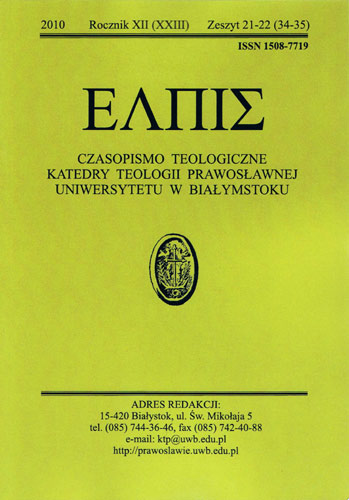Antropologia Ojców Kościoła IV–VIII wieków
DOI:
https://doi.org/10.15290/elpis.2010.12.04Ключевые слова:
teologia, filozofia, antropologia, patrystyka, Prawosławie, obraz i podobieństwoАннотация
In the history of European thought a special place is reserved for the work of St. Gregory of Nyssa „On the Creation of Man”, which was a foundation of the study of man. The IV century is crucial for the understanding of European civilization, because it was then that the term “person”, an essential category in anthropology, emerged. It is characteristic that the study of man was shaped in the Trinitarian and Christological disputes that related to the definition of God and the divine-human reality of Jesus Christ. Thus, anthropology of the Church Fathers considers man in relation to God, believing at the same time that humans are a mystery that cannot be fully explained, since man is created „in the image and likeness of God”. The mystery of a „hidden God” (Isaiah 15:15) has its continuation in the mystery of the „man of a hidden heart” (1 P 3:4). Thus, according to the Fathers of the Church,it is an anthropology of an encounter between man and God.Скачивания
Загрузки
Опубликован
Как цитировать
Выпуск
Раздел
Лицензия
Copyright (c) 2014 Elpis

Это произведение доступно по лицензии Creative Commons «Attribution-NonCommercial-ShareAlike» («Атрибуция — Некоммерческое использование — На тех же условиях») 4.0 Всемирная.
Подробные условия лицензии CC BY-SA (Атрибуция - на тех же условиях) доступны на веб-сайте Creative Commons - ссылка на сайт.
Автор должен заполнить и отправить в редакцию (elpis@uwb.edu.pl) заполненное и подписанное соглашение об авторских правах вместе с заявлением об оригинальности статьи и вкладе автора в статью. Скачать файл соглашения: ЗДЕСЬ









